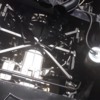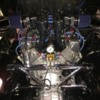I did a search and I read a lot of topics about it but they are all closed, so I allow myself to open a new one.
I will install a more powerful engine, +/- 450 HP, but I will never ride with slick tires on tracks with the car. So I think I'm going to increase the flex stresses, because the torque between the transmission and engine mounts increases during accelerations and the front of the car is more likely to lift, but not the torsion, is this exact?
I think that to increase the flex strength of the frame, I could weld a 40x27x1.5 mm steel tube all the way along the car under the rails. The only drawback I see is the slight reduction in the guard on the ground.
As I have to replace the rocker panels,I also think to weld a longitudinal reinforcement all the way inside.
I will complete by installing a lower strut bar inside the engine bay, above the transmission and crossmembers between the attachment points of the lower rear arms.
What do you think?
Original Post



